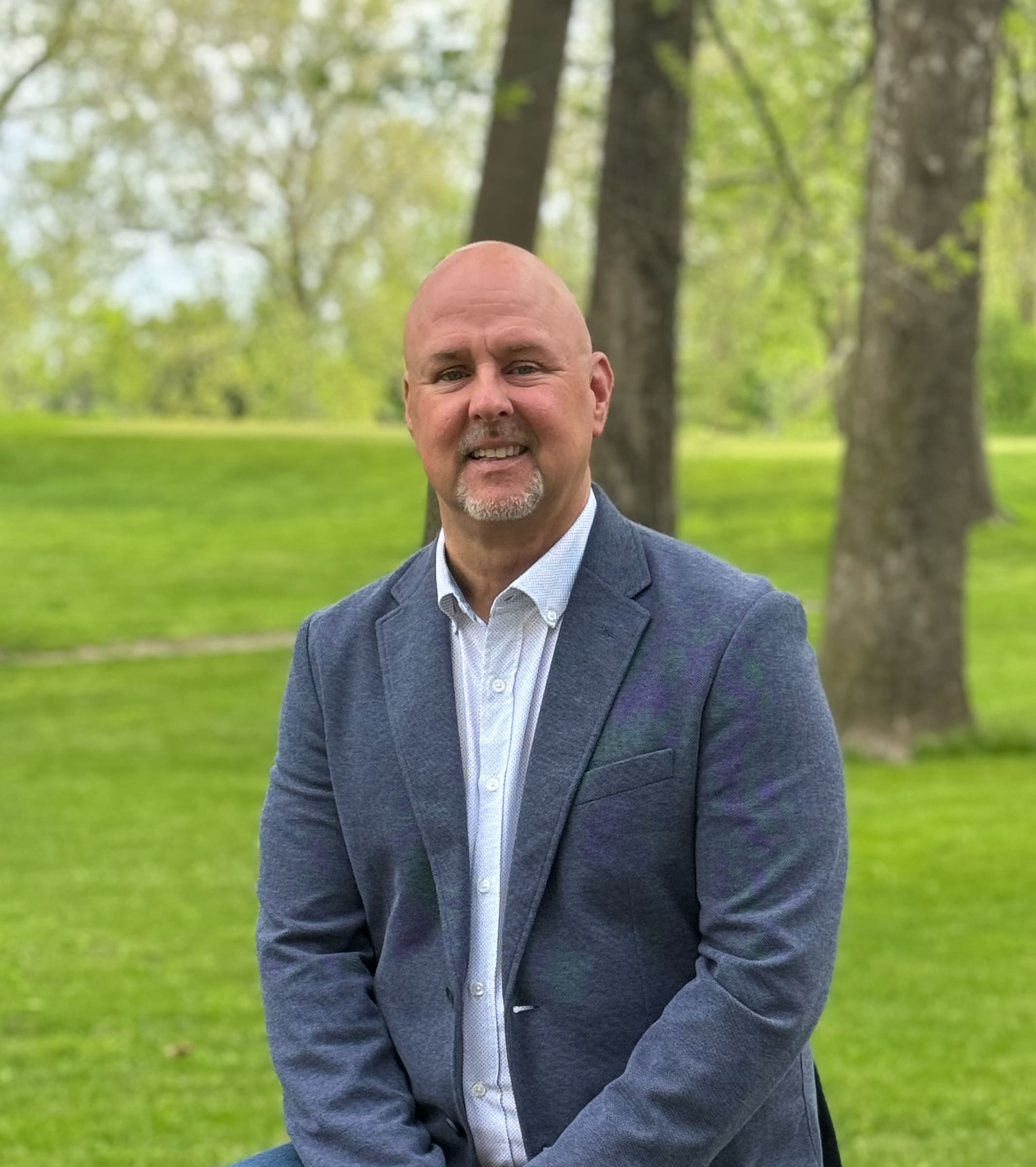Fear and Leading Change
Accountability and Development vs. Direction and Followers
n
I made a differentiation that permeated much of my work life.
n
- n
- Managers manage in steady state circumstances. They are responsible for getting the work done and for ensuring their people have the knowledge and skills to get the work done.
- Leaders lead in abnormal circumstances (emergencies, war, change). They are responsible for direction (Go this way!) and ensuring that people want to go with them.
n
n
n
Iu2019ve lost count of the number of times I said this, in leadership workshops, in facilitating teams of leaders implementing new strategies or organizations, or wrote it in blogposts like this one.
n
I canu2019t quite call it a silly distinction. I still believe it. It is so simple as to be as laughable as:
n
u201cThere are two kinds of people in the world: those who divide the world into two kinds of people and those who do not.u201d
n
After all, as several people said to me,
n
u201cHey Alan, Iu2019m expected to both get the work done and lead change. So which am I?u201d or
n
u201cHey Alan, just when is this steady state youu2019re talking about?u201d
n
In most organizations managers and leaders are the same person and it certainly feels like weu2019re experiencing continuous change. I now say these are u201cdifferent and overlapping skillsets.u201d
n
Recently I have thought some about another difference between managers and leaders, the degree to which they have to deal with fear, both their own fear and the fear of others.
n
u201cI ainu2019t u2018fraid ou2019 no ghostsu201d
n
One of the folk tales that Jacob and Wilhelm Grimm gathered in order to preserve German culture in the time of the Napoleonu2019s conquest is entitled u201cThe youth who went forth to learn what fear was.u201d It was read to me as a child under the title, u201cThe boy who couldnu2019t shudder.u201d
n
This boy wasnu2019t afraid of the dark like some in his family. He didnu2019t fear walking through the graveyard at night. Creepy stories failed to scare him. He didnu2019t refuse dangerous work like repairing the roof; he tied a rope around his waist and went about standing on the joists to replace the thatch. Enough people told him he was u201ctoo stupid to be afraidu201d that he began to think there was something wrong with him. He just couldnu2019t u201cshudderu201d like they could.
n
The boy asked several townspeople to help him learn to shudder. These people told him frightening tales at bedtime and he slept; they moved his bed and he slept on the floor. They impersonated ghosts and he pulled their sheets off. The hangman had him spend the night with hanged corpses. The boy put them in coffins. There were several even more tasks in the in my childhood book, involving threats from a king, a giant, lifting heavy gold, etc., but the youth never did learn to shudder. Ultimately, the fear-deficient boy married without learning to shudder, until his wife poured a bucket of cold water with a hundred small fish on him as he slept and he woke up shuddering. Then he and his wife laughedu00a0 while he dried by the fire eating porridge.
n
As a child I thought this was just a funny story. On reflection there are some lessons about fear:
n
- n
- Fear of the unreal (ghosts, the dead) can be overcome by seeing the truth, (pulling off the sheets) combined with action, (putting dead men in coffins).
- Feeling real fear (the water and the fish, falling from the roof) is fine, no matter how unpleasant, if you can act to mitigate the risk (tie off and watch where you step) and laugh about it later.
n
n
n
Beyond Fairy Tales
n
The unpleasant emotion of fear or its lesser cousin, Anxiety, has its place the world. Fear is sometimes a rational reaction to known risk. For example, it is reasonable to be afraid of heights. I am not afraid of heights; I am afraid of falling. More specifically I am afraid of landing after falling from a height of anything over about six feet.
n
So when I work on a step ladder I am certain the ladder is firmly positioned on a flat surface and stay off the top step. I no longer work on a roof, but when I did, I was certain to tie-off. Known risks can be prevented and most of the unpleasant consequences can be mitigated.
n
In change, the risks are unknown. It was a running joke between Saturday Night Liveu2019s Mike Myersu2019 and Dana Carveyu2019s characters Wayne and Garth, u201cWe fear change.u201d
n
People donu2019t really fear change. They fear unknown risks. They fear a possible loss of job, pay or status; they fear a loss of work Relationships or the peace of mind that comes from knowing that today will likely be pretty much like yesterday u2013 that feeling of u201cno worries – I got this.u201d
n
People react differently to unknown risks. Some freeze; some charge ahead with reckless abandon. In leading change, the leaderu2019s responsibility is to remove the unknown where possible. For example, be as transparent as possible. u201cI will tell you what I know when I know it.u201d
n
Another role of the leader is, where you can, to allow choice. People are less likely to resist a change they have had input into or when it is their choice to commit to the change.
n
Fear of failure
n
Many change leaders, including me, are overly concerned that they will not be up to the task of leading others to change. We discount what we know and what skill we have and think that the world will end because of our inadequacy.
n
Throughout my life I have had a recurring type of dream. When I was younger I was in a classroom taking a test. I had no memory of having taken a class or read any text material for this test, but somehow my whole future depended on my test score.
n
Later, when I was an actor, I dreamed I was on stage in a play I had not rehearsed or even read. When I was a trainer, I was teaching something I not only didnu2019t know, but everyoneu2019s life depended on it.
n
Even in Retirement, I sometimes have such dreams. Now, they are seldom about school. I guess Iu2019ve finally u201cgraduated.u201d I am still occasionally on the stage, but mostly today these dreams are set in the work I left six years ago. I came to call these u201cunprepared dreams.u201d
n
I view these dreams as representations of a fear of failure, my anxiety that I have not done enough preparation or am overcommitted. The only remedy is prioritization and preparation.
n
Of course, there really is no failure in my retired life that has a life or death aftereffect (not that there ever was). For any goal I have I can choose to double down and persevere or choose to revise the goal.u00a0 I now realize that this was always true. Most of my fears were always self-inflicted.
n
I do think about leaders for whom failure has greater consequence. Leaders in wartime or safety in potentially dangerous operations, whose decisions may have injurious outcomes. Prioritization and preparation still seem like appropriate actions.
n
For most leading change, prioritization and preparation, signing up for the risks of change and encouraging others to choose to follow, may not eliminate fear, but it will make it more manageable. When I was first learning to facilitate leadership groups,u00a0 an old pro with whom I was co-facilitating said something I still find comforting:
n
u201cThe butterflies never go away, you just teach them to fly in formation.u201d
n
“,”tablet”:”
Accountability and Development vs. Direction and Followers
n
I made a differentiation that permeated much of my work life.
n
- n
- Managers manage in steady state circumstances. They are responsible for getting the work done and for ensuring their people have the knowledge and skills to get the work done.
- Leaders lead in abnormal circumstances (emergencies, war, change). They are responsible for direction (Go this way!) and ensuring that people want to go with them.
n
n
n
Iu2019ve lost count of the number of times I said this, in leadership workshops, in facilitating teams of leaders implementing new strategies or organizations, or wrote it in blogposts like this one.
n
I canu2019t quite call it a silly distinction. I still believe it. It is so simple as to be as laughable as:
n
u201cThere are two kinds of people in the world: those who divide the world into two kinds of people and those who do not.u201d
n
After all, as several people said to me,
n
u201cHey Alan, Iu2019m expected to both get the work done and lead change. So which am I?u201d or
n
u201cHey Alan, just when is this steady state youu2019re talking about?u201d
n
In most organizations managers and leaders are the same person and it certainly feels like weu2019re experiencing continuous change. I now say these are u201cdifferent and overlapping skillsets.u201d
n
Recently I have thought some about another difference between managers and leaders, the degree to which they have to deal with fear, both their own fear and the fear of others.
n
u201cI ainu2019t u2018fraid ou2019 no ghostsu201d
n
One of the folk tales that Jacob and Wilhelm Grimm gathered in order to preserve German culture in the time of the Napoleonu2019s conquest is entitled u201cThe youth who went forth to learn what fear was.u201d It was read to me as a child under the title, u201cThe boy who couldnu2019t shudder.u201d
n
This boy wasnu2019t afraid of the dark like some in his family. He didnu2019t fear walking through the graveyard at night. Creepy stories failed to scare him. He didnu2019t refuse dangerous work like repairing the roof; he tied a rope around his waist and went about standing on the joists to replace the thatch. Enough people told him he was u201ctoo stupid to be afraidu201d that he began to think there was something wrong with him. He just couldnu2019t u201cshudderu201d like they could.
n
The boy asked several townspeople to help him learn to shudder. These people told him frightening tales at bedtime and he slept; they moved his bed and he slept on the floor. They impersonated ghosts and he pulled their sheets off. The hangman had him spend the night with hanged corpses. The boy put them in coffins. There were several even more tasks in the in my childhood book, involving threats from a king, a giant, lifting heavy gold, etc., but the youth never did learn to shudder. Ultimately, the fear-deficient boy married without learning to shudder, until his wife poured a bucket of cold water with a hundred small fish on him as he slept and he woke up shuddering. Then he and his wife laughed while he dried by the fire eating porridge.
n
As a child I thought this was just a funny story. On reflection there are some lessons about fear:
n
- n
- Fear of the unreal (ghosts, the dead) can be overcome by seeing the truth, (pulling off the sheets) combined with action, (putting dead men in coffins).
- Feeling real fear (the water and the fish, falling from the roof) is fine, no matter how unpleasant, if you can act to mitigate the risk (tie off and watch where you step) and laugh about it later.
n
n
n
Beyond Fairy Tales
n
The unpleasant emotion of fear or its lesser cousin, anxiety, has its place the world. Fear is sometimes a rational reaction to known risk. For example, it is reasonable to be afraid of heights. I am not afraid of heights; I am afraid of falling. More specifically I am afraid of landing after falling from a height of anything over about six feet.
n
So when I work on a step ladder I am certain the ladder is firmly positioned on a flat surface and stay off the top step. I no longer work on a roof, but when I did, I was certain to tie-off. Known risks can be prevented and most of the unpleasant consequences can be mitigated.
n
In change, the risks are unknown. It was a running joke between Saturday Night Liveu2019s Mike Myersu2019 and Dana Carveyu2019s characters Wayne and Garth, u201cWe fear change.u201d
n
People donu2019t really fear change. They fear unknown risks. They fear a possible loss of job, pay or status; they fear a loss of work relationships or the peace of mind that comes from knowing that today will likely be pretty much like yesterday u2013 that feeling of u201cno worries – I got this.u201d
n
People react differently to unknown risks. Some freeze; some charge ahead with reckless abandon. In leading change, the leaderu2019s responsibility is to remove the unknown where possible. For example, be as transparent as possible. u201cI will tell you what I know when I know it.u201d
n
Another role of the leader is, where you can, to allow choice. People are less likely to resist a change they have had input into or when it is their choice to commit to the change.
n
Fear of failure
n
Many change leaders, including me, are overly concerned that they will not be up to the task of leading others to change. We discount what we know and what skill we have and think that the world will end because of our inadequacy.
n
Throughout my life I have had a recurring type of dream. When I was younger I was in a classroom taking a test. I had no memory of having taken a class or read any text material for this test, but somehow my whole future depended on my test score.
n
Later, when I was an actor, I dreamed I was on stage in a play I had not rehearsed or even read. When I was a trainer, I was teaching something I not only didnu2019t know, but everyoneu2019s life depended on it.
n
Even in retirement, I sometimes have such dreams. Now, they are seldom about school. I guess Iu2019ve finally u201cgraduated.u201d I am still occasionally on the stage, but mostly today these dreams are set in the work I left six years ago. I came to call these u201cunprepared dreams.u201d
n
I view these dreams as representations of a fear of failure, my anxiety that I have not done enough preparation or am overcommitted. The only remedy is prioritization and preparation.
n
Of course, there really is no failure in my retired life that has a life or death aftereffect (not that there ever was). For any goal I have I can choose to double down and persevere or choose to revise the goal. I now realize that this was always true. Most of my fears were always self-inflicted.
n
I do think about leaders for whom failure has greater consequence. Leaders in wartime or safety in potentially dangerous operations, whose decisions may have injurious outcomes. Prioritization and preparation still seem like appropriate actions.
n
For most leading change, prioritization and preparation, signing up for the risks of change and encouraging others to choose to follow, may not eliminate fear, but it will make it more manageable. When I was first learning to facilitate leadership groups, an old pro with whom I was co-facilitating said something I still find comforting:
n
u201cThe butterflies never go away, you just teach them to fly in formation.u201d
n
“,”phone”:”
n
n
n
Accountability and Development vs. Direction and Followers
n
n
I made a differentiation that permeated much of my work life.
n
- n
- Managers manage in steady state circumstances. They are responsible for getting the work done and for ensuring their people have the knowledge and skills to get the work done.
- Leaders lead in abnormal circumstances (emergencies, war, change). They are responsible for direction (Go this way!) and ensuring that people want to go with them.
n
n
n
Iu2019ve lost count of the number of times I said this, in leadership workshops, in facilitating teams of leaders implementing new strategies or organizations, or wrote it in blogposts like this one.
n
I canu2019t quite call it a silly distinction. I still believe it. It is so simple as to be as laughable as:
n
u201cThere are two kinds of people in the world: those who divide the world into two kinds of people and those who do not.u201d
n
After all, as several people said to me,
n
u201cHey Alan, Iu2019m expected to both get the work done and lead change. So which am I?u201d or
n
u201cHey Alan, just when is this steady state youu2019re talking about?u201d
n
In most organizations managers and leaders are the same person and it certainly feels like weu2019re experiencing continuous change. I now say these are u201cdifferent and overlapping skillsets.u201d
n
Recently I have thought some about another difference between managers and leaders, the degree to which they have to deal with fear, both their own fear and the fear of others.
n
u201cI ainu2019t u2018fraid ou2019 no ghostsu201d
n
n
One of the folk tales that Jacob and Wilhelm Grimm gathered in order to preserve German culture in the time of the Napoleonu2019s conquest is entitled u201cThe youth who went forth to learn what fear was.u201d It was read to me as a child under the title, u201cThe boy who couldnu2019t shudder.u201d
n
This boy wasnu2019t afraid of the dark like some in his family. He didnu2019t fear walking through the graveyard at night. Creepy stories failed to scare him. He didnu2019t refuse dangerous work like repairing the roof; he tied a rope around his waist and went about standing on the joists to replace the thatch. Enough people told him he was u201ctoo stupid to be afraidu201d that he began to think there was something wrong with him. He just couldnu2019t u201cshudderu201d like they could.
n
The boy asked several townspeople to help him learn to shudder. These people told him frightening tales at bedtime and he slept; they moved his bed and he slept on the floor. They impersonated ghosts and he pulled their sheets off. The hangman had him spend the night with hanged corpses. The boy put them in coffins. There were several even more tasks in the in my childhood book, involving threats from a king, a giant, lifting heavy gold, etc., but the youth never did learn to shudder. Ultimately, the fear-deficient boy married without learning to shudder, until his wife poured a bucket of cold water with a hundred small fish on him as he slept and he woke up shuddering. Then he and his wife laughed while he dried by the fire eating porridge.
n
As a child I thought this was just a funny story. On reflection there are some lessons about fear:
n
- n
- Fear of the unreal (ghosts, the dead) can be overcome by seeing the truth, (pulling off the sheets) combined with action, (putting dead men in coffins).
- Feeling real fear (the water and the fish, falling from the roof) is fine, no matter how unpleasant, if you can act to mitigate the risk (tie off and watch where you step) and laugh about it later.
n
n
n
Beyond Fairy Tales
n
n
The unpleasant emotion of fear or its lesser cousin, anxiety, has its place the world. Fear is sometimes a rational reaction to known risk. For example, it is reasonable to be afraid of heights. I am not afraid of heights; I am afraid of falling. More specifically I am afraid of landing after falling from a height of anything over about six feet.
n
So when I work on a step ladder I am certain the ladder is firmly positioned on a flat surface and stay off the top step. I no longer work on a roof, but when I did, I was certain to tie-off. Known risks can be prevented and most of the unpleasant consequences can be mitigated.
n
In change, the risks are unknown. It was a running joke between Saturday Night Liveu2019s Mike Myersu2019 and Dana Carveyu2019s characters Wayne and Garth, u201cWe fear change.u201d
n
People donu2019t really fear change. They fear unknown risks. They fear a possible loss of job, pay or status; they fear a loss of work relationships or the peace of mind that comes from knowing that today will likely be pretty much like yesterday u2013 that feeling of u201cno worries – I got this.u201d
n
People react differently to unknown risks. Some freeze; some charge ahead with reckless abandon. In leading change, the leaderu2019s responsibility is to remove the unknown where possible. For example, be as transparent as possible. u201cI will tell you what I know when I know it.u201d
n
Another role of the leader is, where you can, to allow choice. People are less likely to resist a change they have had input into or when it is their choice to commit to the change.
n
Fear of failure
n
n
Many change leaders, including me, are overly concerned that they will not be up to the task of leading others to change. We discount what we know and what skill we have and think that the world will end because of our inadequacy.
n
Throughout my life I have had a recurring type of dream. When I was younger I was in a classroom taking a test. I had no memory of having taken a class or read any text material for this test, but somehow my whole future depended on my test score.
n
Later, when I was an actor, I dreamed I was on stage in a play I had not rehearsed or even read. When I was a trainer, I was teaching something I not only didnu2019t know, but everyoneu2019s life depended on it.
n
Even in retirement, I sometimes have such dreams. Now, they are seldom about school. I guess Iu2019ve finally u201cgraduated.u201d I am still occasionally on the stage, but mostly today these dreams are set in the work I left six years ago. I came to call these u201cunprepared dreams.u201d
n
I view these dreams as representations of a fear of failure, my anxiety that I have not done enough preparation or am overcommitted. The only remedy is prioritization and preparation.
n
Of course, there really is no failure in my retired life that has a life or death aftereffect (not that there ever was). For any goal I have I can choose to double down and persevere or choose to revise the goal. I now realize that this was always true. Most of my fears were always self-inflicted.
n
I do think about leaders for whom failure has greater consequence. Leaders in wartime or safety in potentially dangerous operations, whose decisions may have injurious outcomes. Prioritization and preparation still seem like appropriate actions.
n
For most leading change, prioritization and preparation, signing up for the risks of change and encouraging others to choose to follow, may not eliminate fear, but it will make it more manageable. When I was first learning to facilitate leadership groups, an old pro with whom I was co-facilitating said something I still find comforting:
n
u201cThe butterflies never go away, you just teach them to fly in formation.u201d
n
“}},”slug”:”et_pb_text”}” data-et-multi-view-load-tablet-hidden=”true” data-et-multi-view-load-phone-hidden=”true”>
Accountability and Development vs. Direction and Followers
I made a differentiation that permeated much of my work life.
- Managers manage in steady state circumstances. They are responsible for getting the work done and for ensuring their people have the knowledge and skills to get the work done.
- Leaders lead in abnormal circumstances (emergencies, war, change). They are responsible for direction (Go this way!) and ensuring that people want to go with them.
I’ve lost count of the number of times I said this, in leadership workshops, in facilitating teams of leaders implementing new strategies or organizations, or wrote it in blogposts like this one.
I can’t quite call it a silly distinction. I still believe it. It is so simple as to be as laughable as:
“There are two kinds of people in the world: those who divide the world into two kinds of people and those who do not.”
After all, as several people said to me,
“Hey Alan, I’m expected to both get the work done and lead change. So which am I?” or
“Hey Alan, just when is this steady state you’re talking about?”
In most organizations managers and leaders are the same person and it certainly feels like we’re experiencing continuous change. I now say these are “different and overlapping skillsets.”
Recently I have thought some about another difference between managers and leaders, the degree to which they have to deal with fear, both their own fear and the fear of others.
“I ain’t ‘fraid o’ no ghosts”
One of the folk tales that Jacob and Wilhelm Grimm gathered in order to preserve German culture in the time of the Napoleon’s conquest is entitled “The youth who went forth to learn what fear was.” It was read to me as a child under the title, “The boy who couldn’t shudder.”
This boy wasn’t afraid of the dark like some in his family. He didn’t fear walking through the graveyard at night. Creepy stories failed to scare him. He didn’t refuse dangerous work like repairing the roof; he tied a rope around his waist and went about standing on the joists to replace the thatch. Enough people told him he was “too stupid to be afraid” that he began to think there was something wrong with him. He just couldn’t “shudder” like they could.
The boy asked several townspeople to help him learn to shudder. These people told him frightening tales at bedtime and he slept; they moved his bed and he slept on the floor. They impersonated ghosts and he pulled their sheets off. The hangman had him spend the night with hanged corpses. The boy put them in coffins. There were several even more tasks in the in my childhood book, involving threats from a king, a giant, lifting heavy gold, etc., but the youth never did learn to shudder. Ultimately, the fear-deficient boy married without learning to shudder, until his wife poured a bucket of cold water with a hundred small fish on him as he slept and he woke up shuddering. Then he and his wife laughed while he dried by the fire eating porridge.
As a child I thought this was just a funny story. On reflection there are some lessons about fear:
- Fear of the unreal (ghosts, the dead) can be overcome by seeing the truth, (pulling off the sheets) combined with action, (putting dead men in coffins).
- Feeling real fear (the water and the fish, falling from the roof) is fine, no matter how unpleasant, if you can act to mitigate the risk (tie off and watch where you step) and laugh about it later.
Beyond Fairy Tales
The unpleasant emotion of fear or its lesser cousin, anxiety, has its place the world. Fear is sometimes a rational reaction to known risk. For example, it is reasonable to be afraid of heights. I am not afraid of heights; I am afraid of falling. More specifically I am afraid of landing after falling from a height of anything over about six feet.
So when I work on a step ladder I am certain the ladder is firmly positioned on a flat surface and stay off the top step. I no longer work on a roof, but when I did, I was certain to tie-off. Known risks can be prevented and most of the unpleasant consequences can be mitigated.
In change, the risks are unknown. It was a running joke between Saturday Night Live’s Mike Myers’ and Dana Carvey’s characters Wayne and Garth, “We fear change.”
People don’t really fear change. They fear unknown risks. They fear a possible loss of job, pay or status; they fear a loss of work relationships or the peace of mind that comes from knowing that today will likely be pretty much like yesterday – that feeling of “no worries – I got this.”
People react differently to unknown risks. Some freeze; some charge ahead with reckless abandon. In leading change, the leader’s responsibility is to remove the unknown where possible. For example, be as transparent as possible. “I will tell you what I know when I know it.”
Another role of the leader is, where you can, to allow choice. People are less likely to resist a change they have had input into or when it is their choice to commit to the change.
Fear of failure
Many change leaders, including me, are overly concerned that they will not be up to the task of leading others to change. We discount what we know and what skill we have and think that the world will end because of our inadequacy.
Throughout my life I have had a recurring type of dream. When I was younger I was in a classroom taking a test. I had no memory of having taken a class or read any text material for this test, but somehow my whole future depended on my test score.
Later, when I was an actor, I dreamed I was on stage in a play I had not rehearsed or even read. When I was a trainer, I was teaching something I not only didn’t know, but everyone’s life depended on it.
Even in retirement, I sometimes have such dreams. Now, they are seldom about school. I guess I’ve finally “graduated.” I am still occasionally on the stage, but mostly today these dreams are set in the work I left six years ago. I came to call these “unprepared dreams.”
I view these dreams as representations of a fear of failure, my anxiety that I have not done enough preparation or am overcommitted. The only remedy is prioritization and preparation.
Of course, there really is no failure in my retired life that has a life or death aftereffect (not that there ever was). For any goal I have I can choose to double down and persevere or choose to revise the goal. I now realize that this was always true. Most of my fears were always self-inflicted.
I do think about leaders for whom failure has greater consequence. Leaders in wartime or safety in potentially dangerous operations, whose decisions may have injurious outcomes. Prioritization and preparation still seem like appropriate actions.
For most leading change, prioritization and preparation, signing up for the risks of change and encouraging others to choose to follow, may not eliminate fear, but it will make it more manageable. When I was first learning to facilitate leadership groups, an old pro with whom I was co-facilitating said something I still find comforting:
“The butterflies never go away, you just teach them to fly in formation.”
The post Fear and Leading Change appeared first on Wisdom from Unusual Places.
Originally Published on https://wisdomfromunusualplaces.com/blog/

























